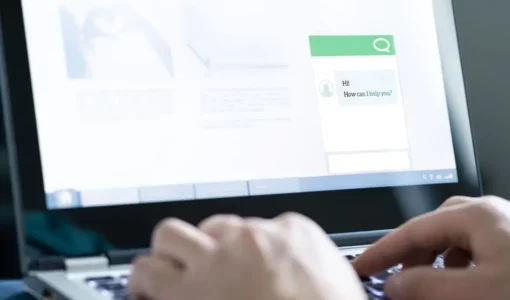Additionally, a customer may be shown information for a specific item directly on an image. Clothes detection is a simple and convenient tool facilitating online shopping. IBM Research division in Haifa, Israel, is working on Cognitive Radiology Assistant for medical image analysis. The system analyzes medical images and then combines this insight with information from the patient’s medical records, and presents findings that radiologists can take into account when planning treatment. How do we understand whether a person passing by on the street is an acquaintance or a stranger (complications like short-sightedness aren’t included)? A. Image classification is how a model classifies an image into a certain category based on pre-defined features or characteristics.
Meta Outlines its Latest Image Recognition Advances, Which Could … – Social Media Today
Meta Outlines its Latest Image Recognition Advances, Which Could ….
Posted: Mon, 17 Apr 2023 07:00:00 GMT [source]
With the aid of databases like NEIL and Imagenet, computer scientists have created a base from which every future image recognition AI system can be built and developed. Finally, let us walk you through the process of creating your very own automation model for image classification on the Superb AI Suite. No matter your experience level, Superb AI makes it easy to build both ground truth datasets for image classification and a custom auto-label model in just a few short steps. Artificial neural networks identify objects in the image and assign them one of the predefined groups or classifications.
Tutorial: Create Your Image Classification Model Using Python and Keras
If we did this step correctly, we will get a camera view on our surface view. Now, we need to set the listener to the frame changing (in general, each 200 ms) and draw the lines connecting the user’s body parts. When each frame change happens, we send our image to the Posenet library, and then it returns the Person object. Let’s add Android Jetpack’s Navigation and Firebase Realtime Database to the project.
How is AI trained to do facial recognition?
Face detection software detects faces by identifying facial features in a photo or video using machine learning algorithms. It first looks for an eye, and from there it identifies other facial features. It then compares these features to training data to confirm it has detected a face.
Instead, you can hit the ground running with one of our dozens of pre-trained object recognition models that have been designed to fit a wide range of business use cases. You can also leverage the Chooch AI platform to train your own highly accurate object recognition model using a custom dataset, and then deploy it in the cloud or with edge AI platform. You can also leverage the Chooch AI platform to train your own highly accurate object recognition model using a custom dataset, and then deploy it in the cloud or with an edge AI platform.
Implement Image Recognition to Your App: Choosing the Best API
By 2015, the Convolutional Neural Network (CNN) and other feature-based deep neural networks were developed, and the level of accuracy of image Recognition tools surpassed 95%. After 2010, developments in image recognition and object detection really took off. By then, the limit of computer storage was no longer holding back the development of machine learning algorithms. One of the most commonly used languages, object-oriented Java has equal power to build simple desktop apps and complex AI-based functionalities. It is appropriate for search algorithms, neural networks and natural language processing (NLP) solutions. Pure cloud-based computer vision APIs are beneficial for prototyping and lower-scale solutions that enable data offloading, are not mission-critical, and are not real-time.
How do you train an AI for image recognition?
- Step 1: Preparation of the training dataset.
- Step 2: Preparation and understanding of how Convolutional Neural Network models work.
- Step 3: Evaluation and validation of the training results of your system.
To make the method even more efficient, pooling layers are applied during the process. These are meant to gather and compress the data from the images and to clean them before using other layers. Pooling layers are a great way to increase the accuracy of a CNN model.
Interdependence in applications
The list of products below is based purely on reviews (sorted from most to least). There is no paid placement and analyst opinions do not influence their rankings. Here is our Promise to Buyers to ensure information on our site is reliable, useful, and worthy of your trust. I hope to use my multiple talents and skillsets to teach others about the transformative power of computer programming and data science. Literature is vast, and either it’s too long and theoretical or too brief to be practical.

This principle is still the core principle behind deep learning technology used in computer-based image recognition. The leading architecture used for image recognition and detection tasks is that of convolutional neural networks (CNNs). Convolutional neural networks consist of several layers, each of them perceiving small parts of an image.
The Machine Learning Workflow
Vision applications are used by machines to extract and ingest data from visual imagery. Kinds of data available are geometric patterns (or other kinds of pattern recognition), object location, heat detection and mapping, measurements and alignments, or blob analysis. The first layer of a neural network takes in all the pixels within an image. After all the data has been fed into the network, different filters are applied to the image, which forms representations of different parts of the image.
With our Custom Auto-Label, we’ve reduced the bottleneck of labeling by hand and implemented easy-to-use technology to expedite your workflow – allowing you to classify your images faster than ever before. Where supervised learning is dependent on pre-existing datasets, unsupervised learning takes the opposite approach. In these types of algorithms, your model works to draw conclusions about raw data, forming labels derived from the patterns exhibited by your dataset.
Image recognition is being used in facial recognition and other security systems.
This kind of training, in which the correct solution is used together with the input data, is called supervised learning. There is also unsupervised learning, in which the goal is to learn from input data for which no labels are available, but that’s beyond the scope of this post. Image recognition is a sub-category of computer vision technology and a process that helps to identify the object or attribute in digital images or video. However, computer vision is a broader team including different methods of gathering, processing, and analyzing data from the real world. As the data is high-dimensional, it creates numerical and symbolic information in the form of decisions. Apart from image recognition, computer vision also consists of object recognition, image reconstruction, event detection, and video tracking.
- We will now move ahead with projects on image processing that are slightly more difficult but equally interesting to attempt.
- When we look at an image, we typically aren’t concerned with all the information in the background of the image, only the features we care about, such as people or animals.
- Manual categorization is no longer needed as digital systems perform the process more effectively.
- Another benchmark also occurred around the same time—the invention of the first digital photo scanner.
- Perpetio’s iOS, Android, and Flutter teams are already actively exploring the potential of image recognition in various app types.
- There are various ways to pool values, but max pooling is most commonly used.
In today’s era, users are sharing a massive amount of data through apps, social networks, and using websites. Moreover, the rise of smartphones equipped with high-resolution cameras generates many digital images and videos. Hence, the industries use a vast volume of digital data to deliver better and more innovative services.
Image classification and the CIFAR-10 dataset
RealNetworks headquartered in Seattle offers the SAFR platform, a facial recognition software platform. Learn more about getting started with visual recognition and IBM Maximo Visual Inspection. There are various ways to pool values, but max pooling is most commonly used. Max pooling obtains the maximum value of the pixels within a single filter (within a single spot in the image). This drops 3/4ths of information, assuming 2 x 2 filters are being used.

What if I told you that, today, there are machines that can view the outside world in greater detail than you, a human? Deep learning techniques may sound complicated, but simple examples are a great way of getting started and learning more about the technology. Figure 2 shows an image recognition system example and metadialog.com illustration of the algorithmic framework we use to apply this technology for the purpose of Generative Design. Thankfully, the Engineering community is quickly realising the importance of Digitalisation. In recent years, the need to capture, structure, and analyse Engineering data has become more and more apparent.
ImageAI – A python library built to empower developers to build applications and systems with self-contained Computer…
Finally, let’s not forget to add uses-permission and uses-feature for the camera. Uses-feature checks whether the device’s camera has the auto-focus feature because we need this one for the pose recognition to work. As a result, we can open the Leaderboard fragment from any other fragments of our app. To set up the database, we choose a European location and a test mode. Our next action is to set viewBinding true in the buildFeature in Gradle Android.
- Please get in touch with one of our AI and machine learning specialists to help you find the right solution to your project.
- You don’t need high-speed internet for this as it is directly downloaded into google cloud from the Kaggle cloud.
- Most of the time, it is used to show the Police or the Insurance Company that a thief indeed broke into the house and robbed something.
- Through careful training, your model can achieve high levels of accuracy before being used for practical applications.
- AI-based systems have also started to outperform computers that are trained on less detailed knowledge of a subject.
- It is easier to train a model with 10 labels, each with 100 training images of a shoe type, than with 30 types.
Which AI algorithm is best for image recognition?
Due to their unique work principle, convolutional neural networks (CNN) yield the best results with deep learning image recognition.